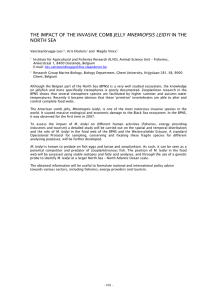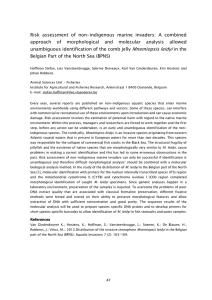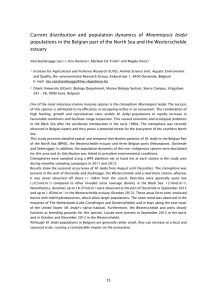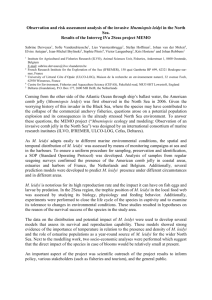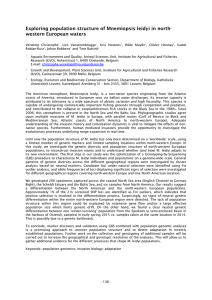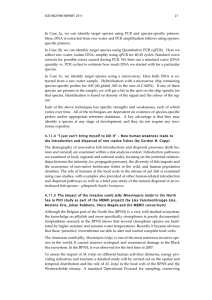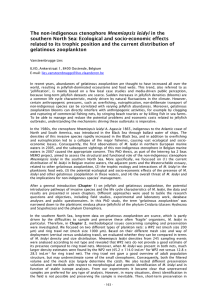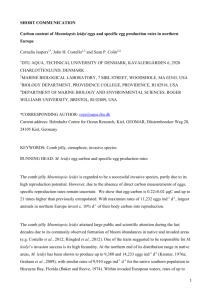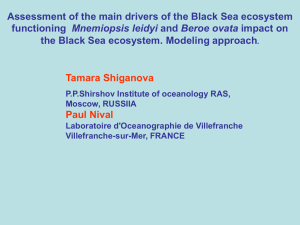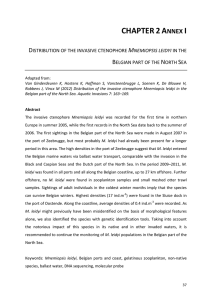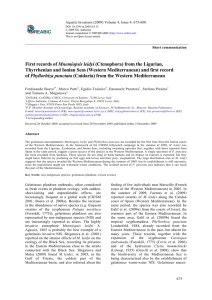Ris
advertisement
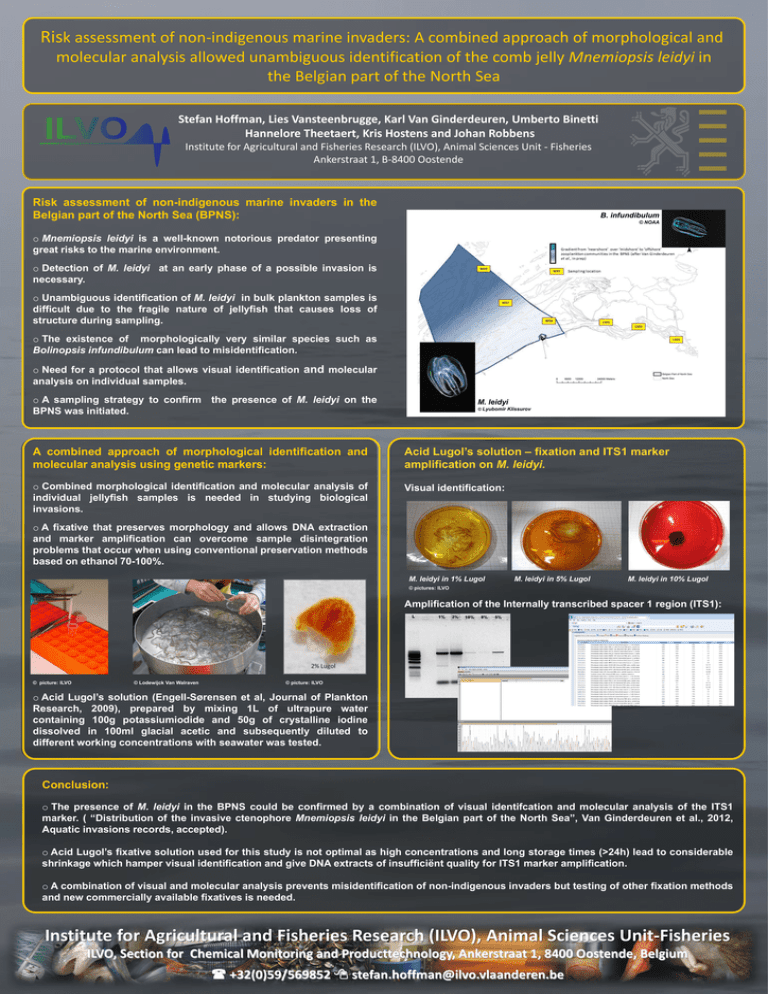
Risk assessment of non-indigenous marine invaders: A combined approach of morphological and molecular analysis allowed unambiguous identification of the comb jelly Mnemiopsis leidyi in the Belgian part of the North Sea Stefan Hoffman, Lies Vansteenbrugge, Karl Van Ginderdeuren, Umberto Binetti Hannelore Theetaert, Kris Hostens and Johan Robbens Institute for Agricultural and Fisheries Research (ILVO), Animal Sciences Unit - Fisheries Ankerstraat 1, B-8400 Oostende Risk assessment of non-indigenous marine invaders in the Belgian part of the North Sea (BPNS): B. infundibulum © NOAA o Mnemiopsis leidyi is a well-known notorious predator presenting great risks to the marine environment. o Detection of M. leidyi at an early phase of a possible invasion is necessary. o Unambiguous identification of M. leidyi in bulk plankton samples is difficult due to the fragile nature of jellyfish that causes loss of structure during sampling. o The existence of morphologically very similar species such as Bolinopsis infundibulum can lead to misidentification. o Need for a protocol that allows visual identification and molecular analysis on individual samples. o A sampling strategy to confirm the presence of M. leidyi on the BPNS was initiated. M. leidyi © Lyubomir Klissurov A combined approach of morphological identification and molecular analysis using genetic markers: Acid Lugol’s solution – fixation and ITS1 marker amplification on M. leidyi. o Combined morphological identification and molecular analysis of individual jellyfish samples is needed in studying biological invasions. Visual identification: o A fixative that preserves morphology and allows DNA extraction and marker amplification can overcome sample disintegration problems that occur when using conventional preservation methods based on ethanol 70-100%. M. leidyi in 1% Lugol M. leidyi in 5% Lugol M. leidyi in 10% Lugol © pictures: ILVO Amplification of the Internally transcribed spacer 1 region (ITS1): © picture: ILVO © Lodewijck Van Walraven © picture: ILVO o Acid Lugol’s solution (Engell-Sørensen et al, Journal of Plankton Research, 2009), prepared by mixing 1L of ultrapure water containing 100g potassiumiodide and 50g of crystalline iodine dissolved in 100ml glacial acetic and subsequently diluted to different working concentrations with seawater was tested. Conclusion: o The presence of M. leidyi in the BPNS could be confirmed by a combination of visual identifcation and molecular analysis of the ITS1 marker. ( “Distribution of the invasive ctenophore Mnemiopsis leidyi in the Belgian part of the North Sea”, Van Ginderdeuren et al., 2012, Aquatic invasions records, accepted). o Acid Lugol’s fixative solution used for this study is not optimal as high concentrations and long storage times (>24h) lead to considerable shrinkage which hamper visual identification and give DNA extracts of insufficiënt quality for ITS1 marker amplification. o A combination of visual and molecular analysis prevents misidentification of non-indigenous invaders but testing of other fixation methods and new commercially available fixatives is needed. Institute for Agricultural and Fisheries Research (ILVO), Animal Sciences Unit-Fisheries ILVO, Section for Chemical Monitoring and Producttechnology, Ankerstraat 1, 8400 Oostende, Belgium +32(0)59/569852 stefan.hoffman@ilvo.vlaanderen.be
